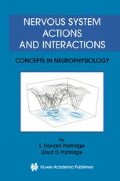Abstract
In an issue of the proceedings of the Bologna Academy and Institute of Sciences and Arts dated 27 March 1791, Luigi Galvani published an article that was to be a milestone in the world of physics and physiology. He began this paper, which was entitled De viribus electricitatis in motu musculari Commentarius, with the following description:
-
I dissected and prepared a frog and placed it on a table, on which was an electrical machine, widely removed from its conductor and separated by no brief interval. When by chance one of those who were assisting me gently touched the point of a scalpel to the medial crural nerves of this frog, immediately all the muscle of the limbs seemed to be so contracted that they appeared to have fallen into violent tonic convulsions. But another of the assistants, who was on hand when I did electrical experiments, seemed to observe that the same thing occurred whenever a spark was discharged from the conductor of the machine.
Access this chapter
Tax calculation will be finalised at checkout
Purchases are for personal use only
Preview
Unable to display preview. Download preview PDF.
References
References
Arthurs, O.J., Boniface, S. (2002) How well do we understand the neural origins of the fMRI BOLD signal? Trends in Neurosci. 25:27–31.
Basmajian, J.V., and DeLuca, C. (1985) Muscles Alive and their Functions Revealed by Electromyography. Williams & Wilkins, Baltimore.
Benedek, G.B., Villars, F.M.H., (2000) Physics With Illustrative Examples from Medicine and Biology: Electricity and Magnetism. Springer Verlag (Biological Physics Series), New York.
Brown, K.T., Flaming, D.G. (1986) Advanced Micropipette Techniques for Cell Physiology. John Wiley & Sons, Chichester.
Brown, W.F. (1984) The Physiological and Technical Basis of Electromyography. Butterworth, Boston.
Cohen, M.S., Bookheimer, S.Y. (1994) Localization of brain function using magnetic resonance imaging. Trends in Neurosci. 17:268–277.
Conn, P.M. (1991) Electrophysiology and Microinjection. Academic Press, San Diego.
Friedli, W.G., Meyer, M. (1984) Strength-duration curve: a measure for assessing sensory deficit in peripheral neuropathy. J. Neurol Neurosurg. Psychiatry 47:184–189.
Gorman P.H. (2000) An update on functional electrical stimulation after spinal cord injury. Neurorehabil Neural Repair 14:251–63.
Hodgkin, A.L., Huxley, A.F., and Katz, B. (1952) Measurement of current-voltage relations in the membrane of the giant axon of Loligo. J. Physiol. 116:424–448.
Jansen, B.H. (1991) Quantitative analysis of electroencephalograms: Is there chaos in the future? Int. J. Biomed. Comput. 27:95–123.
Loeb G.E., Peck R.A., Moore W.H., Hood K. (2001) BION system for distributed neural prosthetic interfaces. Med Eng Phys. 23:9–18.
Neher, E., and Sakmann, B. (1992) The patch clamp technique. Sci. Am. 266(3):44–51.
Pascual-Leone, A., Bartres-Faz, D., Keenan, J.P. (1999) Transcranial magnetic stimulation: studying the brain-behavior relationship by induction of ‘virtual lesions.’ Phil. Trans., R. Soc. Lond. B 354:1229–1238.
Somjen, G. (1972) Sensory Coding in Mammalian Nervous Systems. Appleton-Century-Crofts, NY.
Stern, E., Silbersweig, D.A. (2001) Advances in functional neuroimaging methodology for the study of brain systems underlying human neuropsychological function and dysfunction. J. Clin. Exp. Neuropsychol. 23:3–18.
Additional Reading
Adrian, E.D., and Zotterman, Y. (1926) The impulses produced by sensory nerve endings. J. Physiol. 61:151–171.
Berger, H. (1929) Über das Elektrenkephalogramm des Menschen. Arch. Psychiat. 27:179–183.
Blair, H.A. (1932) On the intensity-time relations for stimulation by electric currents. J. Gen. Physiol. 15:709–729.
DuBois-Reymond, E. (1848) Untersuchungen über thierische Elektricität, vol. 1. Reimer, Berlin.
Erlanger, and J. Gasser, H.S. (1924) The compound nature of the action current of nerve as disclosed by the cathode ray oscillograph. Am. J. Physiol. 70: 624–666.
Erlanger, J., and Gasser, H. (1938) Electrical Signs of Nervous Activity. University of Pennsylvania Press, Philadelphia.
Fritsch, G., and Hitzig, E. (1870) Über die elektrische Erregbarkeit des Grosshirns. Arch. Anat. Physiol. Wiss. Med. 37:300–332.
Gasser, H.S., and Erlanger, J. (1922) A study of the action currents of nerve with a cathode ray oscillograph. Am. J. Physiol. 62:496–524.
Green, R.M. (1953) A Translation of Luigi Galvani’s De viribus electricitaitis in motu musculari Commentarius. Elizabeth Licht, Publisher, Cambridge, MA.
Hamill, O.P., Marty, A., Neher, E., Sakmann, B., and Sigworth, F.J. (1981) Improved patch-clamp techniques for high-resolution current recording from cells and cell-free membrane patches. Pflüger’s Arch. 391:85–100.
Hodgkin, A.L., and Huxley, A.F. (1939) Action potentials recorded from inside a nerve fibre. Nature (London) 144:710–711.
Kondo, H. (1953) Michael Faraday. Sci. Am. 189:91–98.
Lapique, L. (1926) L’excitabilitie en fonction du temps: La chronaxis, sa signification et sa mesure, University of France Press, Paris.
Ling, G., and Girard, R.W. (1949) The normal membrane potential of frog sartorius fibers. J. Cell. Comp. Physiol. 34:383–396.
Pflüger, E.F.W. (1859) Untersuchungen über die Physiologie des Electrotonus. A. Hirshwald, Berlin.
Stevens, C.F., (1995) Six Core Theories of Modern Physics, M.I.T. Press, Cambridge, MA.
Author information
Authors and Affiliations
Rights and permissions
Copyright information
© 2003 Springer Science+Business Media New York
About this chapter
Cite this chapter
Partridge, L.D., Partridge, L.D. (2003). Measurement of Neural Function. In: Nervous System Actions and Interactions. Springer, Boston, MA. https://doi.org/10.1007/978-1-4615-0425-2_10
Download citation
DOI: https://doi.org/10.1007/978-1-4615-0425-2_10
Publisher Name: Springer, Boston, MA
Print ISBN: 978-1-4613-5070-5
Online ISBN: 978-1-4615-0425-2
eBook Packages: Springer Book Archive

